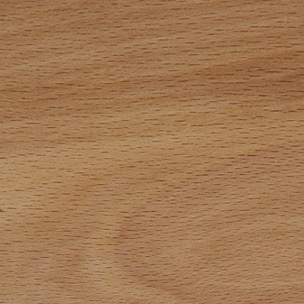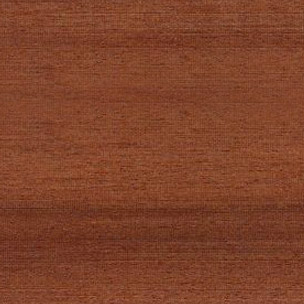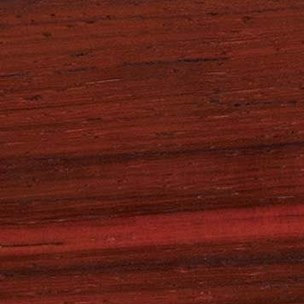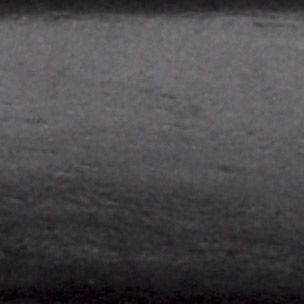Quality materials
Au Sabot carefully selects all the materials used to make its knives: high-grade steels for blades, French and European timber or tropical hardwoods for handles and worked materials such as composites ( plexi, POM, ABS, etc.).

Steels
Various components contain the steel used to make the blades, giving the knives their high- quality finish: carbon steel, stainless steel, Damascus steel each have their own unique character.

Wood, animal and mineral materials and composites
All the woods used by the cutlery business are authorised by the Washington Convention (signed on 3 March 1973), which regulates international trade in animal and plant species threatened with extinction.

BAMBOU
Bamboo grows naturally on the American, Asian, African and Oceania continents, and has adapted to a wide range of climates (tropical, sub-tropical and temperate). The main stem is a woody and fistulous (i.e. hollow) culm or cane, segmented at the joints or nodes. The visible scar at the nodes marks the base of the fallen leaves. Silica-rich culm wood is very hard and extremely resistant. Certain species of bamboo grow at spectacular rates of up to a metre per day. Bamboo was the pre-eminent choice in Chinese antiquity.

BOCOTE WOOD
Bocote is an exotic wood native to Central America with curved lines. The color ranges from golden brown to tan to golden yellow.

ROSEWOOD
Sourced from a variety of palissander, this Brazilian timber was named “rosewood” in the 17 th century. It gives off an aroma of roses when cut.
From its initial pinkish-yellow colour streaked with veins of darker pink, it takes on a warm amber hue as it ages.

SNAKEWOOD
A yellowish wood, streaked with reddish brown veins, snakewood comes from French Guyana or Brazil. It is mainly used in marquetry.

VIOLETWOOD
Baptised “violetwood” in the 17 th century, this is a variety of Brazilian rosewood. Its name refers to its colour, a light purple-brown streaked with very prominent darker veins. It ages to a darker amber colour with more marked veining than rosewood.
A very hard wood used only for veneers.

FINNISH BIRCH
This species is native to Northern Europe. Also called Karelia or Norwegian birch, or curly birch.
The curls are formed during episodes of frost when the sap rises in the spring.

STABILIZED FINNISH BIRCH
Finnish birch can be stabilized and colored. Colored resins are injected under pressure into the wood. This technique enhances the wood’s resistance to moisture and warping, while preserving its natural properties. It creates unique aesthetic effects and enhances the wood’s natural.

BUBINGA WOOD
A dense hardwood with beautiful purplish veining, bubinga wood is native to Central Africa (Cameroon and Gabon). This wood is used in brush manufacture, marquetry, for decorative panels in cabinet making and for our paring knives.

BOXWOOD
An evergreen shrub of the Buxaceae family, its ornamental qualities make boxwood a popular choice in Parks. It is a very hard wood, pinkish-yellow in colour, with an even grain. In addition to marquetry and fine sculpture, it is often used to make musical instruments.

CHESTNUT
Originally, chestnut was more appreciated for its fruit than for its wood. The chestnut is easily shaped. It presents a fine veining with large dark circles. It comes from Europe.

OAK
What could be more precious than our local woods? Oak is the best-known and most appreciated species in France. A name that reminds us that our forests produce wood of incomparable physical and aesthetic qualities.

COMPOSITE
It’s the perfect combination of a blend of natural minerals and acrylic resins, giving it unique properties in terms of durability, aesthetics and ease of maintenance. Its smooth, non-porous, homogeneous surface offers absolute resistance to water and humidity. Composite looks like stone and feels warm and pleasant to the touch.

HORN
Native to Africa or Argentina.

RAM’S HORN
Horns selected in various countries, including Africa, undergo several different operations before being assembled on the knives.

EBONY
Native to Africa, Madagascar or India, ebony is a very black, dense, hardwood.

SMOKED SYCOMORE MAPLE
A majestic tree, sycomore maple undergoes a smoking treatment that changes the color of the wood, giving it unique and highly prized characteristics, notably for the manufacture of knife handles and other handcrafted objects.

BROOM
Brooms are shrubs or deciduous shrubs, much branched columnar shape and angular green stems. These types are growing in Europe, particularly in France. The bark is used for tanning and the manufacture of rope. The broom also used to cover roofs in place of thatch in some mountains and make brooms!

JUNIPER
Name of a Provençal juniper tree of the Cupressaceae family, with thorny leaves and black or purple berries. A type of tar extracted from this tree is used to produce cade oil, which is used in veterinary medicine and dermatology.

BEECH
Native to Europe, this tree grows in valleys and is planted in the areas around homes to provide attractive scenery. Often used to manufacture furniture, parquets and stairs, and also for kitchen knives. It is a very resistant wood, pearly white in colour.

DANTA
Comes from Afrika, it’s a pale brown to a reddish brown. It is often used in cabinetmaking and marquetry to make ornaments.

OLIVE WOOD
Derived mainly from common walnut, this wood is distinguished by its aesthetic and mechanical qualities. Its rich color palette ranges from light to dark brown, often with chocolate hues and darker veins.
Because of its durability, walnut wood is often used in objects intended to last a long time and be handed down from generation to generation.

BONE
Sourced from African or Asian buffalo.

OVANGKOL
This is an exotic wood species from West and Central Africa, derived from a large tropical tree that can reach 45 m in height and 80 cm in diameter. A yellow-brown to dark-brown wood with coppery highlights, it is mainly used for cabinetmaking and exterior joinery.

PADOUK WOOD, COMMONLY KNOWN AS THE AFRICAN CORALWOOD
Bright red hardwood, native to Africa or Western Asia. One of its varieties, the padouk, was used in the reign of Louis XIV to make the drawers of certain pieces of precious furniture such as the Mazarine chests designed by the famous cabinetmaker, André Charles Boulle. We use this wood to make our paring knives.

PALO SANTO
Palo Santo is highly valued by the South Americans. It is used by shamans for its medicinal properties but also by individuals who are burned it to purify their homes. It is a brown wood heart and green, very variable in color, light olive green to chocolate brown.

WARTHOG
The warthog is the African cousin of the wild boar and is not an endangered species. The warthog teeth are ivory sometimes irregular, and tinged with shades.

PISTACHIO
Pistachio is a shrub (Pistacia terebinthus) of the Anacardiaceae family: It’s a French wood native to the Mediterranean basin. This shrub from three to live meters has a hard yellowish-white, sometimes mixed greenish or reddish hues wood older it becomes more or less dark brown. It is often used in cabinetmaking and marquetry to make ornaments.

STABILIZED POPLAR BURL
Poplar, native to Europe, North America and Asia, is a fast-growing tree, making it a relatively abundant source of poplar burl.
Stabilized poplar undergoes a stabilization process in which resins are injected under pressure into the wood pores. This produces unique aesthetic effects that enhance the wood’s natural patterns. Stabilization strengthens the wood, making it more resistant to impact and humidity. This extends the life of products made from this wood, such as knife handles.

PLEXI
Plexiglas, also known as acrylic or PMMA (polymethyl methacrylate), is a plastic material whose natural clarity and brilliance make it an attractive choice for knife handles.

SOLID HORN
It is the tip of the cow horn, it is massive.

POM
Polyoxymethylene is a top-of-the-range polymer (plastic) with technical characteristics and physical properties that are particularly suited to use in kitchen cutlery.

APPLE TREE
It is the most cultivated fruit tree in the world with a fruit loaded with symbolism. In France, it is well known in Normandy. It is used in carpentry Interior, veneer and furniture. A pinkish color sometimes veined red brown, with fine grain and sometimes wavy straight wire.

RECONSTITUTED TURQUOISE STONE
Reconstituted turquoise stone is a synthetic material made from fragments of natural turquoise that are ground and then mixed with a resin or binder to create a uniform mass. Reconstituted turquoise stone retains the color variations, veining and luster characteristic of natural turquoise.

SAPELE
From the rainforest in Africa, this wood is pinkish brown to copper red brown.

TEAK
Native to south and south-east Asia and Myanmar, this is an oily tropical hardwood noted for its excellent weatherability, used historically for woodwork and shipbuilding. Its attractive appearance, due to its marked veining, has made it a long-standing popular choice with cabinetmakers.

WENGE
Wood durable and stable from Africa, color chocolate milk with thin veins, a straight wire, a coarse and fine grain figure flamed.


